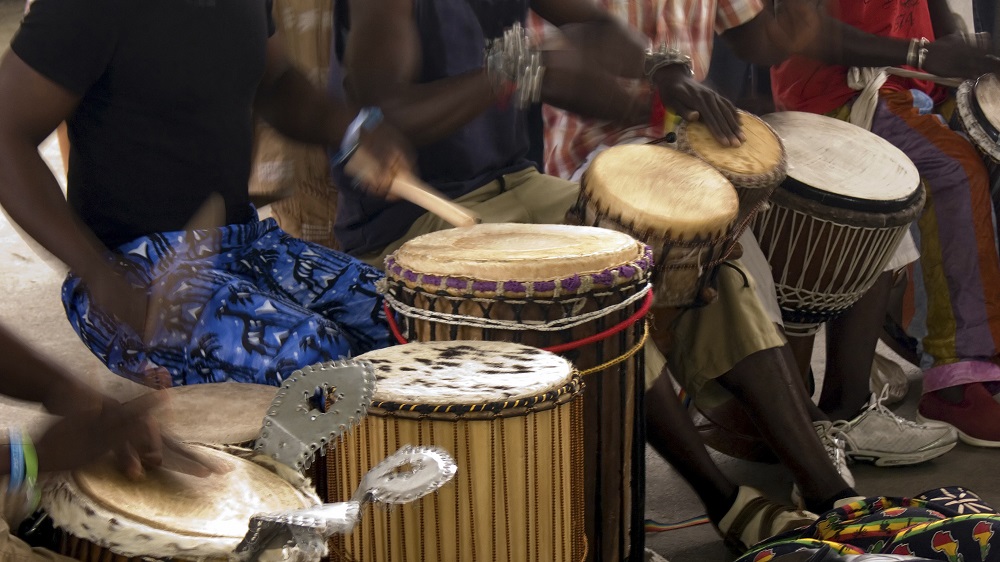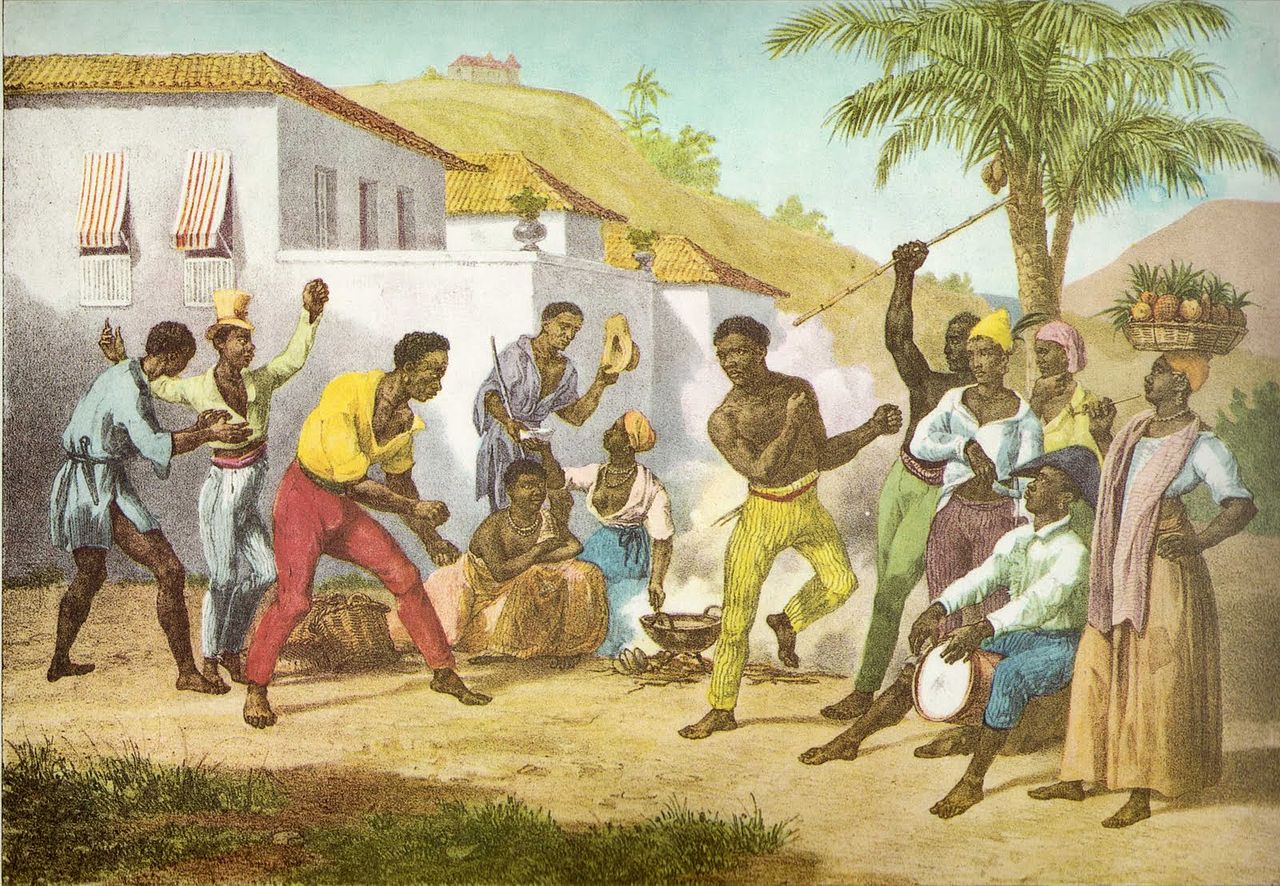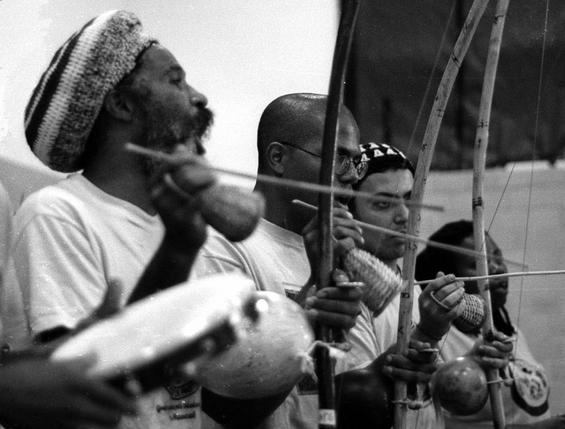
Sounds of Africa
African Slaves in Brazil
Almost immediately after they arrived in the New World, Europeans began importing African slaves to work the newly conquered lands. In North America, slaves were mainly concentrated in the south-to be sure, Northerners held slaves as well. In South America, Africans were most numerous in Surinam, sections of Venezuela and Colombia, some areas of Peru, Ecuador, Mexico, and especially Brazil, with its plantation economy similar to that of the American south. Brazil did not liberate slaves until 1888. The following section, therefore, will concentrate on Brazilian music, where African influences have long been felt.
North and South America took different approaches to slavery. In the U.S., many slave owners wanted slaves to erase their African identity. In South America, on the other hand, slave owners tended to believe that slaves would be happier-and therefore work harder-if they could dance, sing, and observe some of their native traditions. Like other indigenous peoples, slaves were forced to convert to Catholicism, but even under those forced conditions, they found ways to preserve their African heritage. Many African religious communities simply substituted names of Catholic saints for their own deities: the god Exú became St. Anthony, Ogum became St. George, and Oxalá became Jesus Christ. This blending of belief systems-syncretism-yielded some fascinating musical results. To understand these, however, we must first outline some principal characteristics of African music.
Characteristics of African Music
Call and response is often found in African ritual songs. A leader, often male, will sing the "call," a solo phrase of music, which is answered by a chorus, often female. Sometimes the call is brief, sometimes long and elaborate. Variants are possible: in the response, for example, singers might sing in unison, harmonize spontaneously, or add new notes to a familiar melody. Most importantly, perhaps, slaves brought many different kinds of drums and other percussion instruments to the Americas, which were usually played with the hands (although for certain rituals, sticks might be used).
Indeed, drums and ritual are strongly connected: according to some African traditions, drums are believed to summon ancestors or spirits. In some communities women may not touch the drums but are only allowed to sing; in others, women are the drum players and take a leadership role as priestesses. Other percussion instruments, such as metal bells and rattles, enhance this rich sound palette.
When we listen to a typical Afro-Brazilian drumming ensemble, we are often struck by the complexity of the dense rhythmic texture created by the convergence of many beat patterns and pulses. Given this strong rhythmic presence, it isn't surprising that participants in these rituals would feel like dancing. Here we find another difference between the Protestant North and the Catholic South: while dancing is prohibited in some Protestant denominations even today, in various Catholic communities, both in Europe and the New World, dance has long been part of worship.
In such communities, dance can express religious sentiment or joy in the divine presence. In Afro-Brazilian rituals, the dancers often form a circle, sometimes with one person in the center. The general term for such rituals is macumba. Many of these practices, which date from the 1550s, are still observed today. The classic 1959 movie Orfeu negro (Black Orpheus), which takes place in Rio de Janeiro, features examples of macumba in which the gods (orishas) are called forth against the backdrop of constant percussion.
Another musical practice of African origin is capoeira, an elaborately choreographed martial art. The origins of capoeira are unknown: some scholars believe that it dates from the time when African slaves wore shackles on their wrists and could defend themselves only with powerful, well-timed kicks. Other scholars focus on capoeira's evolution from a forbidden dance of protest to a national sport. When capoeira is performed today, participants often wear white suits, which must be kept spotless as part of the physical challenge.
Music is an important element of thebatería capoeira. The traditional capoeira ensemble, or batería, includes the berimbau, an archery bow with a gourd resonator; tambourines; the reco-reco, or rasp; and an agogo, or gong-like bell.The may accompany songs, often sung in call-and-response style, while the dance-like martial art unfolds. The songs treat a variety of topics, such as the hardship of daily life or the need to persevere. As the fighting intensifies, so does the music.





'Anti' is the likely origin of the word 'Andes', Spanish conquerors generalized the term and named all the mountain chain as 'Andes', instead of only the eastern region, as it was the case in Inca era.









